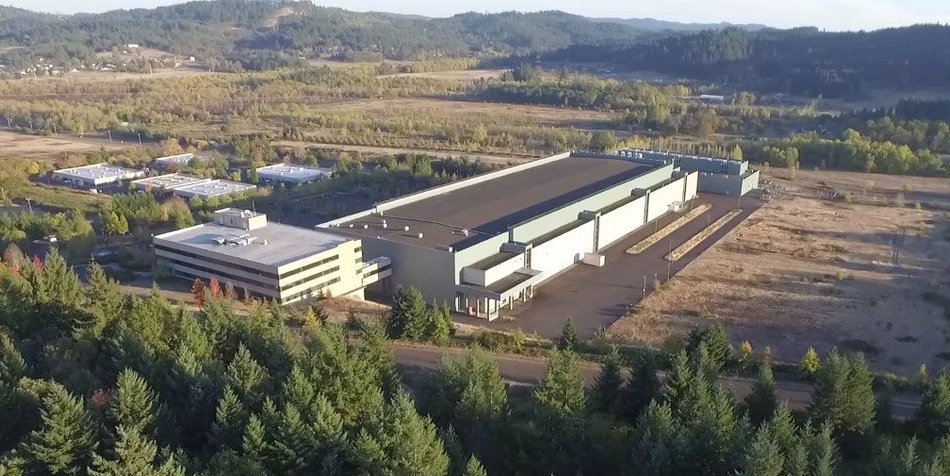
MicroLED Display Tech Focus Of That Oregon Chipmaker Factory Bought In March By STRATACACHE
July 23, 2020 by Dave Haynes
Chris Riegel has started talking about his plans for the big abandoned factory he bought in Oregon back in March.
The CEO and sole owner of STRATACACHE told the Oregonian the 1.2-million-square-foot facility in Eugene will be focused on developing and manufacturing microLED displays – large-scale video wall tech that would compete with manufacturers like Sony (Crystal LED), Samsung (The Wall) and LG (trade show demos, so far).
The old Hynix chip factory had been vacant for more than 10 years, and was picked up by Riegel at auction for $6.3 million. The site is 200 acres and was built for $1.5 billion by memory chipmaker Hynix.
Riegel told the paper he plans to have a pilot line going a year from now, and be into full manufacturing in 2022. The attraction, along with the fire sale price, was a largely pristine facility with serious clean room capabilities – the sort of thing needed for making millions of LED chips that aggregate into video wall displays.
Stratacache is now performing mechanical upgrades and preparing to reroof the production area, he said. Ultimately, Riegel said his company expects to spend somewhere between $150 million and $350 million resurrecting the facility and adapting it for Stratacache’s technology.
Oregon has a long history of both innovation and disappointment in video display technology. Inventions at Tektronix spun off into companies including InFocus and Planar Systems, which were briefly among the state’s largest businesses. Those spinouts ultimately lost out to rivals overseas and the industry migrated to Asia, closer to low-cost production facilities.
Hillsboro-based Planar, now owned by a Chinese company called Leyard Optoelectronic, is among Stratacache’s competitors.
While Stratacache has factories and suppliers in Asia, too, Riegel said the availability of the Eugene factory and Oregon’s tax exemptions for tech manufacturers made the Hynix facility an attractive choice for expansion.
And he said the state’s expertise in electronics manufacturing – Intel’s largest operations are in Hillsboro – provides a skilled pool of workers and suppliers to draw from as Stratacache works to revive the Hynix site.
“There’s definitely a tribal knowledge base that’s interesting to us here in Oregon,” Riegel said.
MicroLED is almost certainly where the large format display industry is going – with resolutions that start to approximate what’s seen on LCD and OLED displays. Conventional direct view LED display modules have surface-mounted light chips that are easily damaged, and can’t really push much past the 1mm pixel pitch mark. MicroLEDs like Sony’s are built in such a way that the damage risk is much lower – which may well be why they’re showing up in major Apple stores as the featured visual.
The interim technology out there is miniLED (which has teeny but not micro light chips). While companies like Absen are marketing miniLED walls, that tech is mostly being seen as a better option for backlighting and “locally-dimming” higher-end LCDs.
MicroLED has been relatively slow to develop, and super expensive. The big challenges are creating processes and equipment that make and transfer huge amounts of microscopic LEDs rapidly, and with absolutely minimal production flaws.
Riegel is not exactly a wild, devil-may-care spender, so he obviously sees a future in which there is market demand and the manufacturing and production yield challenges are resolved. I’m pretty sure the great majority of microLED product would come out of Taiwan and China, so being on the west coast of the US lowers production and shipping times and costs.
Spending a few hundred million to kit out the factory is a big deal, but building a new one would cost much more.



Leave a comment